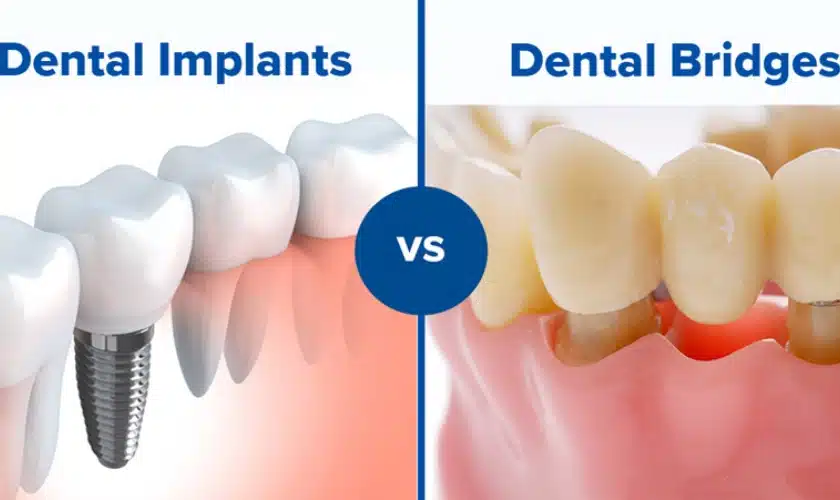Little Known Facts About Dental Sense.
Little Known Facts About Dental Sense.
Blog Article
Dental Sense - Questions
Table of ContentsDental Sense Fundamentals ExplainedGetting My Dental Sense To WorkThe Basic Principles Of Dental Sense Dental Sense Fundamentals Explained
are clinical tools surgically implanted into the jaw to bring back a person's capability to eat or their appearance. They offer assistance for man-made (phony) teeth, such as crowns, bridges, or dentures. When a tooth is lost because of injury or condition, a person can experience difficulties such as rapid bone loss, malfunctioning speech, or modifications to eating patterns that cause discomfort.Oral implant systems are composed of a dental implant body and dental implant joint and might likewise consist of a joint addiction screw. Dental implant vs bridge. The oral implant body is surgically inserted in the jawbone instead of the tooth's origin. The dental implant abutment is generally affixed to the implant body by the abutment fixation screw and extends with gums into the mouth to sustain the connected fabricated teeth
(https://justpaste.it/hj6ob)Structure of The Oral Implant System choosing dental implants, speak to your dental company about the prospective advantages and dangers, and whether you are a candidate for the procedure. Things to take into consideration: Your overall wellness is an essential aspect in identifying whether you are a good candidate for dental implants, exactly how long it will require to heal, and just how long the dental implant might remain in area.
Cigarette smoking might influence the recovery process and decrease the lasting success of the implant. The recovery process for the dental implant body may take several months or longer, during which time you usually have a short-term joint in location of the tooth. the dental implant treatment: Thoroughly comply with the dental hygiene guidelines provided to you by your dental supplier.
More About Dental Sense
Implant failure can result in the demand for one more surgery to fix or replace the implant system. Recovers the capability to eat Restores aesthetic look Assists maintain the jawbone from diminishing as a result of bone loss Protects the health of the surrounding bone and gums Assists maintain surrounding (neighboring) teeth steady Enhances high quality of life Damage to surrounding natural teeth throughout dental implant positioning Injury to the surrounding tissues during surgery, such as sinus perforation Injury throughout surgery (for instance, fracture of bordering jawbone) Poor function, such as feeling like the teeth do not bite together generally A feeling that the tooth hangs or twisting in position resulting from a joint screw loosening up Implant body failure (looseness of the implant body) as a result of systemic infection, which may be a lot more likely in individuals with uncontrolled diabetes mellitus because of neighborhood infection in bone and gum tissues supporting the dental implant body due to delayed healing, which may be most likely in individuals that smoke Difficulty cleaning up the periodontals around the dental implant, causing poor oral hygiene Without treatment periodontal condition Post-surgical feeling numb as a result of nerve impingement or damage Always notify healthcare carriers and imaging service technicians that you have dental implants prior to any kind of magnetic resonance imaging (MRI) or x-ray procedures.
FDA is not knowledgeable about any negative occasions reported for MRI or x-ray procedures with dental implants. Dental implants systems are normally constructed from materials that follow worldwide agreement criteria of the International Company for Standardization (ISO) or ASTM International. These criteria have details of what makes a secure material.

An oral implant is a framework that replaces a missing out on tooth. With screw-like gadgets, the surgeon inserts an implant right into the jawbone, and it acts as a support for a synthetic tooth, called a crown. A tool called a joint attaches the fabricated tooth to the oral implant. The crown is custom-made to fit the person's mouth and match the color of their teeth.
How Dental Sense can Save You Time, Stress, and Money.
Some people are not eligible for oral implant surgical procedure. It is for oral cosmetic surgeons to operate on individuals with: acute illnessuncontrollable metabolic diseasebone or soft cells illness or infectionIf these issues are solved, an individual can have the surgical treatment. In, oral cosmetic surgeons avoid operating individuals with: If individuals with any one of the above undertake oral implant surgical procedure, there is a greater risk of the implant stopping working.

Dental implant surgical treatment is a tailored procedure. Give you time to recover. Connect the blog post and final crown, bridge or denture.
Next, your doctor will very carefully position the dental implant right into your jaw. If your i was reading this implant is near the front of your mouth, your dental professional will make a temporary tooth for you to wear until you heal.
The 8-Minute Rule for Dental Sense
Your service provider can tell you what to expect in your situation. During the healing phase, your jawbone ought to fuse to the dental implant. This process, called osseointegration, is important for security and long-term success. This process can take anywhere from three to 9 months. In some situations, it may take longer.
Once your implant heals, your dental practitioner can attach the abutment (small adapter message) and your final remediation (crown, bridge or denture). This normally takes about one hour to complete and may require a 2nd minor surgery. You should not feel any discomfort during your oral implant treatment since your company will certainly make use of drug to numb your gum tissues.
Report this page